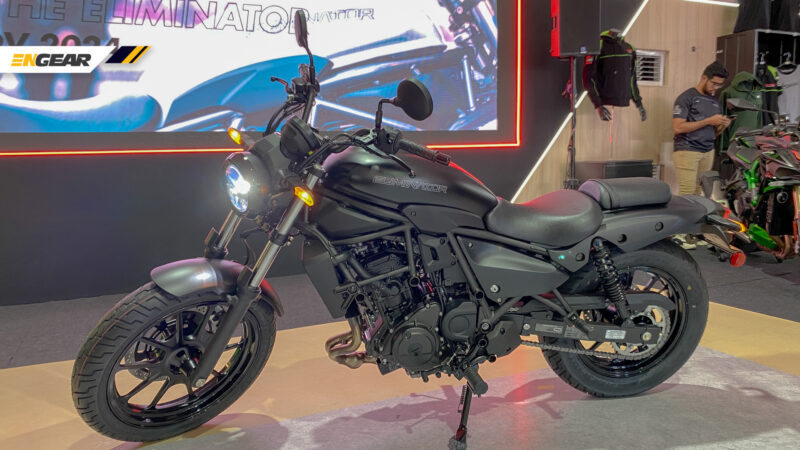In conjunction with the Malaysian MotoGP event, MODENAS has officially launched its latest cruiser, the 2025 Modenas Eliminator 500 with the price starting from RM30,100 (without insurance and roadtax).
This model is a rebadged version from Kawasaki Eliminator 500, aligning with the approach taken for previous motorcycles under 750 cc.
The Modenas Eliminator is powered by a parallel twin 451 cc engine, capable of producing 44.7 hp at 9,000 rpm and a torque of 43 Nm at 6,000 rpm.
Power is transmitted to the wheel via a six-speed manual transmission equipped with an assist-slipper clutch.
The Eliminator features a 41 mm front telescopic fork, complemented by twin shock absorbers with preload adjustment, offering a wheel travel of 120 mm at the front and 90 mm at the rear.
For stopping power, the motorcycle employs dual 310 mm disc brakes with twin-piston calipers at the front, paired with a single disc and a single-piston caliper at the rear. It also includes a two-channel anti-lock braking system (ABS).
The Eliminator 500 comes with 18-inch rims fitted with 130/70 front tires, and 16-inch alloy rims with 150/80 rear tires.
Additional features include LED headlights and taillights, an LCD cluster display with Rideology app support, a fuel tank capacity of 12.8 liters, and a seat height of 735 mm.
